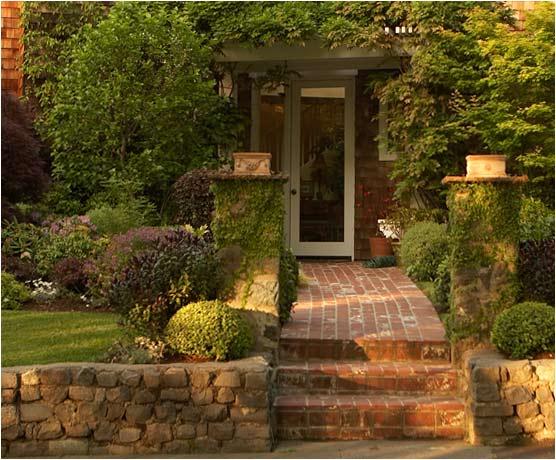Last fall, we published a long piece about how to make different types of Bay Area homes more energy efficient (download the free e-book here). This month, we’ve distilled the wisdom offered in that post and added a few more Green tips in honor of March, the greenest of months. Enjoy!

Go green! This month, take steps to make your home remodeling project eco-friendly. Photo: Reilly Designs, 2016
1. Implement a whole-house solution
Richard Hiteshew of A-1 Guaranteed Heating & Air, Inc. says people who want to “Green up” their homes should “reduce before they produce.” Before you purchase a new furnace or solar power system, replace old insulation and ductwork and seal off spaces that allow for drafts.
2. Save water
Conserving water will not only help with California’s drought, it’ll also save you money on your water bill. According to Ilan Sigura of Sigura Construction, Inc., cutting-edge appliances like tankless water heaters and hot water recirculation pumps help minimize the amount of water that’s wasted down the drain. Graywater systems collect lightly used water from sinks, showers, and washing machines so it can be reused for lawns and plants.
3. Upgrade your windows
Upgrading windows is one of the most cost-effective energy efficiency investments you can make. Replace aluminum windows with contemporary, low-maintenance, double-paned windows framed with vinyl, fiberglass or clad-wood materials.
4. Insulate your roof
“It’s like putting on a hat,” says John Gorman of Save Energy Company, referring to insulating a ceiling. “It’s the most productive thing you can do to create an energy-efficient home.”
5. Change your light bulbs
Replacing your incandescent light bulbs with LED lighting can reduce your energy use by more than 80 percent. Miss the warmth? Contemporary LED lights come in a variety of colors that mimic the vintage look of incandescent bulbs.
6. Add stone
Masonry creates a climate barrier that mitigates the fluctuations of temperature on any given day. On a hot day, it takes longer for a home to heat up; on a cold day, a home with stone features will keep in the warmth. To increase energy efficiency, add stone facing around the exterior of your home—the layer of stone will help reduce your energy bill while keeping the period detail.
7. Green flooring
Before you invest in new flooring materials, evaluate if you really need new flooring in the first place. Often, the most sustainable approach to flooring is to use what you already have. Removing and throwing away old flooring creates more landfill waste, and the manufacturing process of new flooring creates greenhouse gasses. Find out if your flooring can be renewed with a deep cleaning, sanding or polishing. If not, see if the wood flooring underneath can be sanded and polished.
8. Go solar
Reduce your dependence on fossil fuels and, ultimately, your electric bills, by switching to solar. Once the domain of the wealthy, solar companies now offer many affordable options for middle-class homeowners.
2 Responses
Leave a Reply
You must be logged in to post a comment.

Going solar is a change I have wanted to make for some time. I’ve heard it can make a huge impact on your energy bills, and if you live in an area where it’s sunny for a majority of the year, you’ll be able to run off of solar power easily. Thank you for sharing the tips.
We just finished building our new home too! We followed a similar method – we walked the model & then made a lot of semi-custom changes to fit our family’s needs. They were so flexible and were even willing to do several cosmetic things for me as well – like wallpaper in our powder room! They didn’t do “free upgrades” for us, but we did get a builders credit where they gave us some additional money to put towards upgrades. We were able to get several thousand dollars to put towards our upgrades! I also found it worthwhile spending the money on upgraded appliances as the builder can often get you better pricing & then you don’t have to worry about upgrading later And I had to add the additional shoe shelving too – I think our builder thought I was a bit nuts adding that much floor to ceiling shelving spaced for shoes, but they did it!